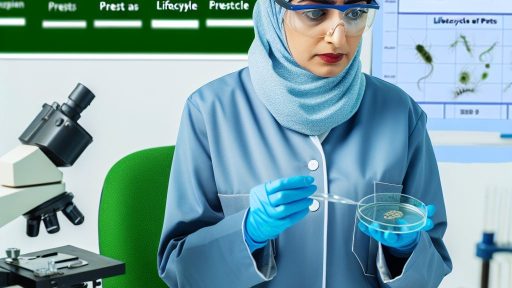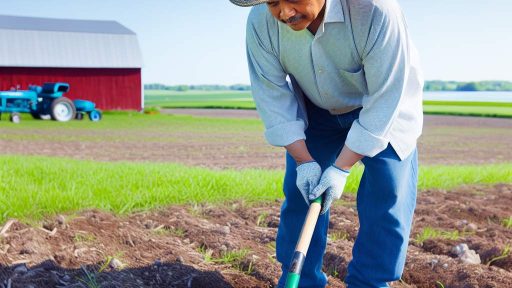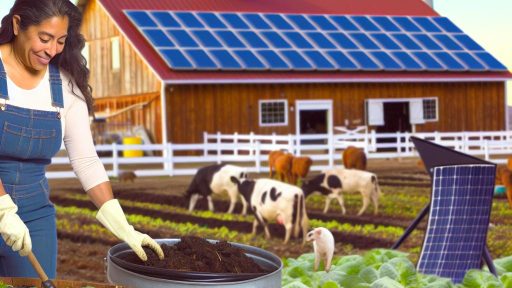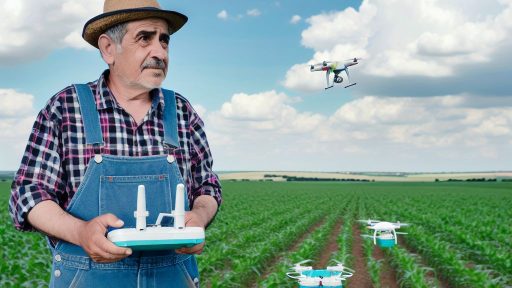Introduction to Sustainable Crop Rotation
Definition and Importance
Sustainable crop rotation involves alternating different crops in a given area.
This practice enhances soil health and supports biodiversity.
It reduces pest and disease pressures significantly.
Additionally, this method improves crop yields over time.
Farmers can manage nutrient levels better with crop rotation.
Moreover, it offers resilience against climate impacts.
This system promotes a balanced ecosystem on farms.
Implementing sustainable rotations also reduces the need for chemical fertilizers.
Furthermore, it helps in conserving water and enhancing soil structure.
Effective crop rotation aligns with environmental sustainability goals.
Thus, farmers can ensure food security while protecting the environment.
Technological advances enhance traditional practices in crop rotation.
For instance, precision agriculture techniques provide tailored solutions.
Farmers utilize data-driven insights to select the best crops.
As a result, they optimize yields and minimize risks.
Transform Your Agribusiness
Unlock your farm's potential with expert advice tailored to your needs. Get actionable steps that drive real results.
Get StartedThis integration of technology fosters innovation in agricultural practices.
Consequently, sustainable crop rotation becomes more efficient and productive.
Historical Evolution of Crop Rotation Practices
Early Practices of Crop Rotation
Ancient civilizations recognized the importance of rotating crops.
They transitioned from continuous cropping to rotation systems.
This shift improved soil fertility and reduced pest populations.
Advancements in Understanding Soil Health
The 19th century marked a significant turn in agricultural practices.
Scientists started linking crop rotation to soil health and productivity.
Researchers like Justus von Liebig emphasized nutrient management.
These insights laid the foundation for modern crop rotation methods.
The Adoption of Scientific Farming Methods
The early 20th century witnessed the rise of scientific farming.
Farmers began integrating rotation with other management practices.
This approach enhanced both crop yields and sustainability.
Furthermore, education played a crucial role in these advancements.
Technological Innovations in Crop Rotation
The digital revolution has introduced advanced farming technologies.
Precision agriculture tools enable farmers to optimize their crop rotations.
Drones and research software help analyze soil and crop health.
These innovations make it easier to implement effective rotation strategies.
Contemporary Practices and Sustainability
Today, sustainable crop rotation is crucial for climate resilience.
Farmers employ diverse rotation plans to enhance biodiversity.
The focus is on balancing productivity with environmental stewardship.
Moreover, continuous education in sustainable practices remains essential.
Benefits of Sustainable Crop Rotation
Soil Health
Sustainable crop rotation significantly improves soil health.
It enhances soil structure and increases nutrient availability.
This method reduces soil erosion and helps retain moisture.
Showcase Your Farming Business
Publish your professional farming services profile on our blog for a one-time fee of $200 and reach a dedicated audience of farmers and agribusiness owners.
Publish Your ProfileConsequently, healthy soil can produce more robust crops.
Crop rotation also encourages the presence of beneficial microorganisms.
These microorganisms support plant growth and nutrient cycling.
Moreover, rotating crops reduces the buildup of pests and diseases.
This results in lower pesticide usage and a healthier ecosystem.
Biodiversity Enhancement
Implementing diverse crop rotations promotes biodiversity.
Diverse plant species attract various beneficial insects.
These insects can supply natural pest control services.
Additionally, a variety of crops can improve pollination rates.
This higher biodiversity contributes to a more resilient agricultural system.
It reduces the likelihood of total crop failures due to pests.
Enhanced biodiversity also provides habitat for wildlife.
This practice leads to a more balanced and thriving ecosystem.
Explore Further: Controlled Environment Agriculture Systems for Efficient Farming
Technological Advances in Agriculture: An Overview
The Role of Technology in Modern Farming
Technology plays a crucial role in modern agriculture.
It enhances productivity and efficiency on farms.
Innovative tools simplify various farming operations.
Additionally, technology helps monitor crop health and soil conditions.
Precision Agriculture
Precision agriculture tailors farming practices to specific conditions.
This approach increases yields while minimizing waste.
Farmers use GPS technology to plant crops with high accuracy.
They can apply fertilizers and water precisely where needed.
As a result, resources are utilized efficiently.
Data Analytics in Farming
Data analytics transforms the way farmers make decisions.
Farmers collect data from various sources, including weather patterns.
They analyze this data to anticipate crop needs.
This analysis leads to better timing for planting and harvesting.
Consequently, yields increase, and costs decrease.
Automation and Robotics
Automation and robotics are revolutionizing agricultural practices.
Autonomous tractors and drones perform tasks efficiently.
They reduce labor costs and improve precision in operations.
For instance, drones assist in monitoring crop health.
Overall, automation optimizes farm management.
Sustainable Agricultural Practices
Technological advances also promote sustainable practices.
For example, techniques like vertical farming can save space.
Hydroponics and aquaponics use less water compared to traditional methods.
This innovation supports the reduction of resource depletion.
Moreover, technology encourages organic farming techniques.
Implications of Technological Advances in Agriculture
Technological advances are reshaping agriculture today.
From precision farming to automation, the impact is significant.
Showcase Your Farming Business
Publish your professional farming services profile on our blog for a one-time fee of $200 and reach a dedicated audience of farmers and agribusiness owners.
Publish Your ProfileThese innovations not only enhance productivity but also ensure sustainability.
As technology continues to evolve, the future of farming looks promising.
Discover More: Integrating Drones Into Sustainable Farming Practices
Integrating Technology into Crop Rotation
Precision Agriculture Tools
Precision agriculture tools revolutionize crop rotation practices.
These tools utilize data-driven approaches to enhance decision-making.
Farmers now employ GPS technology for accurate field mapping.
This technology helps farmers determine the best planting times.
Additionally, soil sensors provide real-time insights into soil health.
Farmers can adjust their crop rotation plans accordingly.
Moreover, drones offer aerial imagery for better field analysis.
This helps identify crop health issues and pest infestations early.
Consequently, farmers can apply targeted treatments more effectively.
Data Analytics in Crop Management
Data analytics plays a crucial role in optimizing crop rotation.
Farmers analyze historical yield data to predict future outcomes.
By evaluating crop performance, they make informed planting decisions.
This approach reduces waste and maximizes crop yields over time.
Additionally, predictive models forecast weather impacts on crops.
Farmers can adapt their practices based on these forecasts.
Furthermore, integrating data from various sources enhances accuracy.
This includes satellite imagery and climate data analysis.
Automated Machinery and Equipment
Automated machinery enhances efficiency in crop rotation practices.
Robotic systems allow for precise planting and harvesting.
These machines reduce labor costs and increase productivity.
For instance, autonomous tractors optimize fieldwork operations.
They utilize sensors to navigate and perform tasks accurately.
This results in reduced soil compaction and improved crop health.
Moreover, automated irrigation systems manage water usage efficiently.
This ensures crops receive optimal moisture levels throughout growth.
Delve into the Subject: How Farm Management Software Enhances Crop Planning Efficiency
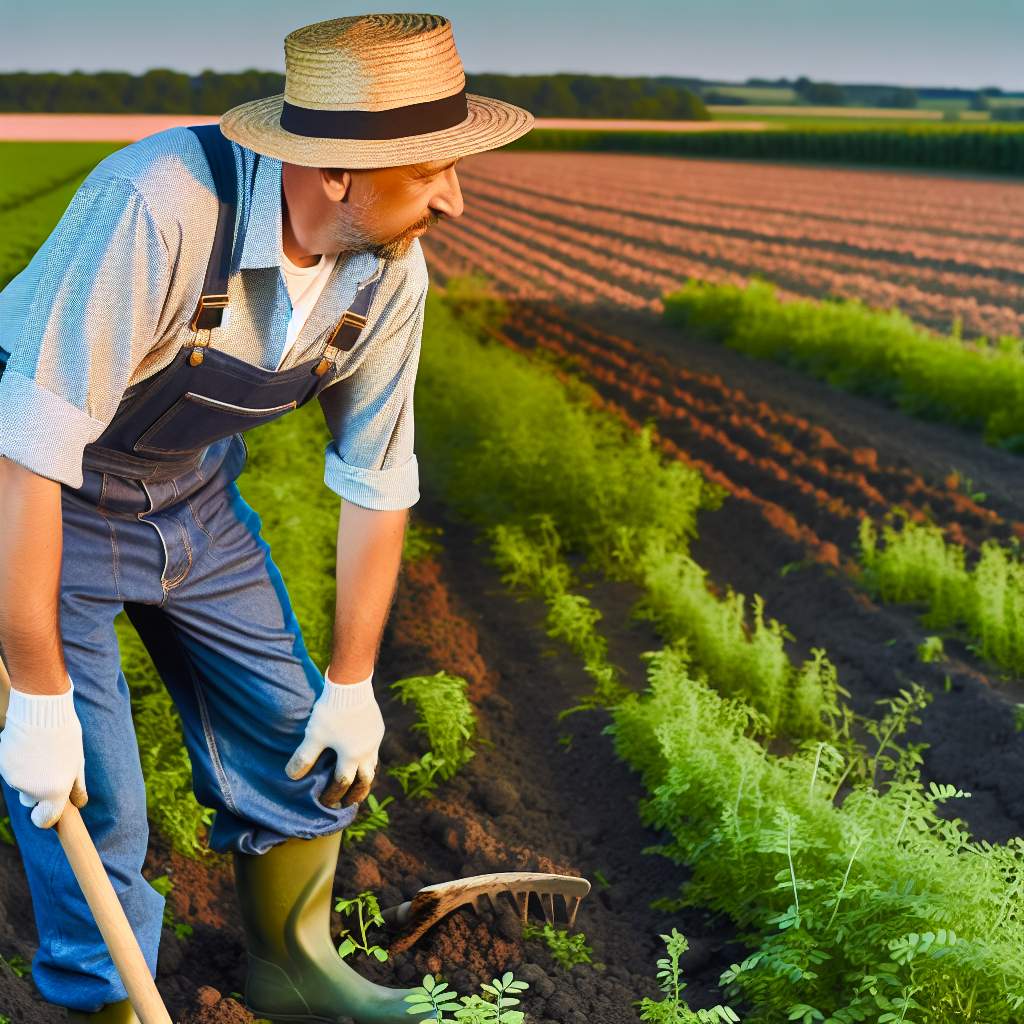
Case Studies: Successful Implementations of Technology-Enhanced Crop Rotation
Precision Farming in Iowa
Farmers in Iowa use precision farming to optimize crop rotation.
This technology enhances soil health and productivity.
Advanced sensors monitor soil conditions in real-time.
Consequently, farmers adjust their rotation schedules based on data.
As a result, they have experienced a significant increase in yields.
Moreover, the technology reduces chemical inputs and enhances sustainability.
Integrated Pest Management in California
California farmers implement integrated pest management (IPM) strategies.
This approach improves crop rotation efficiency by managing pests effectively.
Utilizing drones, farmers can identify pest infestations quickly.
As a result, they apply targeted treatments to only affected areas.
This reduces pesticide use and promotes healthier ecosystems.
Showcase Your Farming Business
Publish your professional farming services profile on our blog for a one-time fee of $200 and reach a dedicated audience of farmers and agribusiness owners.
Publish Your ProfileThe integration of technology has led to higher quality produce.
Digital Soil Mapping in Australia
In Australia, digital soil mapping has transformed crop rotation practices.
This technology offers detailed insights into soil characteristics.
As a result, farmers can make informed decisions about crop sequences.
Moreover, this method enhances water management during dry seasons.
Farmers reported improved resilience in their crop yields.
Technological advancements continue to drive sustainable practices.
Data-Driven Strategy in Brazil
Brazilian farmers are adopting data-driven strategies for crop rotation.
They analyze historical yield data alongside weather patterns.
This analysis helps optimize crop selection and timing.
By employing data, farmers mitigate risks related to climate variability.
The result is a more sustainable farming approach with better economic outcomes.
This case exemplifies the power of technology in agriculture.
Sustainable Practices in Europe
Various European countries showcase successful crop rotation implementations.
They leverage farm management software for planning and execution.
This technology enhances transparency and efficiency across farms.
Furthermore, farmers track sustainability metrics through these platforms.
Consequently, they improve compliance with environmental regulations.
These efforts have positioned Europe as a leader in sustainable agriculture.
Explore Further: Maximizing Crop Yields with Controlled Environment Agriculture
Challenges and Limitations of Technological Integration in Crop Rotation
Understanding the Barriers
Farmers face numerous barriers when adopting new technologies.
One significant challenge is the high initial cost of advanced equipment.
Additionally, many farmers lack access to necessary training.
Moreover, the rapid pace of technological change can overwhelm growers.
Consequently, these factors inhibit the integration of new methods.
Technological Adoption Issues
Resistance to change often arises among traditional farmers.
They may prefer conventional practices that have proven effective.
Furthermore, limited access to internet connectivity can restrict adoption.
Rural areas especially struggle with this technological gap.
As a result, farmers may miss out on beneficial innovations.
Environmental and Compatibility Concerns
Technological solutions often vary in their environmental impacts.
Some technologies may not align with specific local conditions.
This misalignment can lead to suboptimal results in crop yield.
Additionally, dependency on specific technologies may reduce biodiversity.
Farmers must consider these factors when choosing methods.
Economic Constraints
The economic viability of investing in technology is uncertain for many farms.
Some farmers may find it challenging to secure financing.
Market fluctuations can further complicate these financial decisions.
Therefore, cost-effectiveness remains a crucial consideration.
Farmers must evaluate whether the benefits offset the expenses.
Showcase Your Farming Business
Publish your professional farming services profile on our blog for a one-time fee of $200 and reach a dedicated audience of farmers and agribusiness owners.
Publish Your ProfileFuture Trends in Sustainable Crop Rotation and Technology Use
Integration of Technology in Crop Rotation
Farmers increasingly adopt precision agriculture techniques.
This technology enhances decision-making for crop rotation.
Farmers use drones to monitor crop health and soil conditions.
Drones provide real-time data for better rotation planning.
Additionally, satellite imagery contributes to informed choices.
Farmers can analyze field variability effectively.
Use of Data Analytics
Data analytics plays a significant role in modern agriculture.
It utilizes historical data to improve crop rotation strategies.
Farmers identify the best crops for specific environments.
This approach optimizes yield while maintaining soil health.
By predicting weather patterns, farmers can make timely decisions.
Adopting Sustainable Practices
There is a growing emphasis on organic and sustainable farming methods.
Crop rotation enhances soil fertility and reduces pest issues.
Farmers increasingly focus on integrating cover crops.
Cover crops improve soil structure and biodiversity.
Moreover, they minimize erosion and nutrient runoff.
Collaboration and Knowledge Sharing
Collaboration among farmers fosters innovation.
Farmers share successful practices through workshops and online platforms.
This sharing accelerates the adoption of sustainable methods.
Local agricultural extension services provide crucial support.
They offer resources and expertise on best practices.
Future Predictions
Experts predict wider adoption of technology in agriculture.
This shift will lead to enhanced efficiency in crop management.
Moreover, there will be a focus on resilience against climate change.
Farmers will increasingly rely on sustainable crop rotation systems.
These systems will adapt to changing weather patterns and conditions.
Additional Resources
Advancing sustainability: The impact of emerging technologies in …
Precision Agriculture: Benefits and Challenges for Technology …

